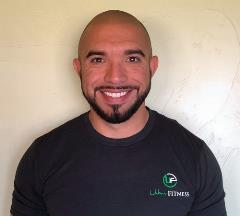3 Key Learning Objectives:
-
Understand how to identify upper extremity deficits.
-
Understand the importance of movement assessment for this exercise.
-
Understand coaching cures related to these deficits.
The back squat exercise is one of the most widely utilized exercises to improve lower extremity strength and function and athletic performance. The back squat exercise is a closed kinetic chain exercise that requires triflexion of the hip, knee, and ankle joints. Primary movers of this exercise are the quadriceps, gluteals, and erectors.
It is also a functionally relevant movement pattern as it supports derivative squat maneuvers that translate into many activities of daily living such as picking up a child, getting up from a seated position, and lifting heavy objects from a lowered position. Further, the back squat can serve as an evaluation tool to assess an individual for strength, stability, neuromotor control, and mobility within the kinetic chain.1
The back squat requires a coordinated neuromuscular effort across many joints and that involves many muscle groups. An appropriate amount of relative mobility, stability, strength, and neuromotor control are required in order to effectively execute a safe movement pattern.1 Any deficit in one or more of these characteristics may result in aberrant movement patterns and compensatory mechanisms that may put the client at an increased risk of injury when attempting to execute this movement, especially under external load.
Any deficit in one or more of these characteristics may result in aberrant movement patterns and compensatory mechanisms that may put the client at an increased risk of injury when attempting to execute this movement, especially under external load.
It is the responsibility of the certified fitness professional to have a thorough understanding of the physiological and biomechanical demands of this exercise to properly assess a client and prescribe an individualized exercise prescription. Here are some identified deficits and coaching cues to look for when assessing a client during the back squat exercise.1
| Table 1. Upper Extremity Deficits and Coaching Cues | ||
| Deficit(s) | Coaching Cues | |
| Head Position | Head should be maintained in the neutral position relative to the spine. Slight cervical extension is acceptable. The client should also be coached to look forward or slightly upward. Neuromuscular deficits may include the inability to maintain neutral head position which can be exacerbated with incorrect gazing patterns. Strengthening the neck and upper back muscles may help maintain the head in correct position during the back squat exercise. Proper cervical range of motion should also be present in order to safely and effectively perform this movement pattern. | Fix gaze on focal point at eye height or slightly higher. May provide tactile feedback to enhance posterior muscular recruitment. |
| Thoracic Spine | Thoracic spine should be slightly extended with the chest positioned outward and upward. Scapulae should be retracted and depressed which may assist with the chest position. These three cues should be executed simultaneously and during the entirety of the movement execution. Activation of the erectors and periscapular muscles during the movements will also help contribute to spinal stability. Neuromuscular deficits could be impaired scapular retraction and chest in a downward position. Strengthening the periscapular muscles and lengthening the anterior deltoid and pectoralis muscles may help correct this.
|
Pinch shoulder blades together and pull scapulae down by engaging the latissimus dorsi. Point chest towards ceiling. |
| Lumbar Spine | Goal is to maintain a slight lordotic curve and engage the posterior and abdominal muscles to optimize spinal stability. To minimize undesirable forces to the spine, the trunk should be held as upright as possible to mitigate forward lean. Neuromuscular deficits could include forward lean and rounding of the back. Inadequate core strength of the abdominals and posterior extensor muscles could be underlying factors. Inadequate lengthening of the hip flexors and lack of lumbar spinal mobility could also contribute to excessive forward lean of the trunk. | Pinch shoulder blades together and pull scapulae down by engaging the latissimus dorsi. Engage abdominals and erector muscles. Maintaining good head posture, retracted and depressed shoulder blades, and a high chest will aid in helping stabilize the spine. |
As certified fitness professionals, we should be familiar with evaluating movements like the back squat exercise. Given its practical applications to many activities in life, incorporating the back squat exercise into a client’s exercise prescription is viable to promote an active lifestyle, enhance performance, and maintain function.
In order to evaluate and properly prescribe an exercise prescription, it’s critical to understand the demands of the movement and articulate feedback to the client. It’s recommended to begin with the client using his or her own weight against gravity for resistance. Once the movement has been evaluated and properly executed, external load may be slowly added. It’s important that the client have good biomechanics prior to adding external load. If there are aberrant movement patterns, the certified professional should not put external load on the client during the movement.
It is not advised to put strength on top of dysfunction or weakness. This puts the client at an increased risk of injury and doesn’t address the underlying deficit(s). Further, adding external load to a client who is unable to properly execute the movement against gravity under no load may exacerbate the compensatory mechanisms. In other words, the stronger muscles get stronger and the weaker muscles get weaker.
These three upper extremity coaching points are a starting point to properly assess a client’s cervical, thoracic, and lumbar spinal positioning during the back squat exercise. The next article in this series will focus on coaching cues for the lower extremity during the back squat exercise.
Author:

Eddie Davila, MS, ACSM-CEP, ACSM-EP, EIM 3, is co-owner of Urban Fitness (www.urbanfitnessmt.com) in Bozeman, MT. He is also a Certified Clinical Exercise Physiologist in the department of Cardiac and Pulmonary Rehabilitation at Bozeman Health Deaconess Hospital. Eddie is passionate about inspiring people to live active lifestyles and helping them achieve their personal best.
References:
- Myer GD, Kushner AM, Brent JL, et al. The back squat: a proposed assessment of functional deficits and technical factors that limit performance. Strength Cond J. 2014 Dec 1; 36(6):4-27.


